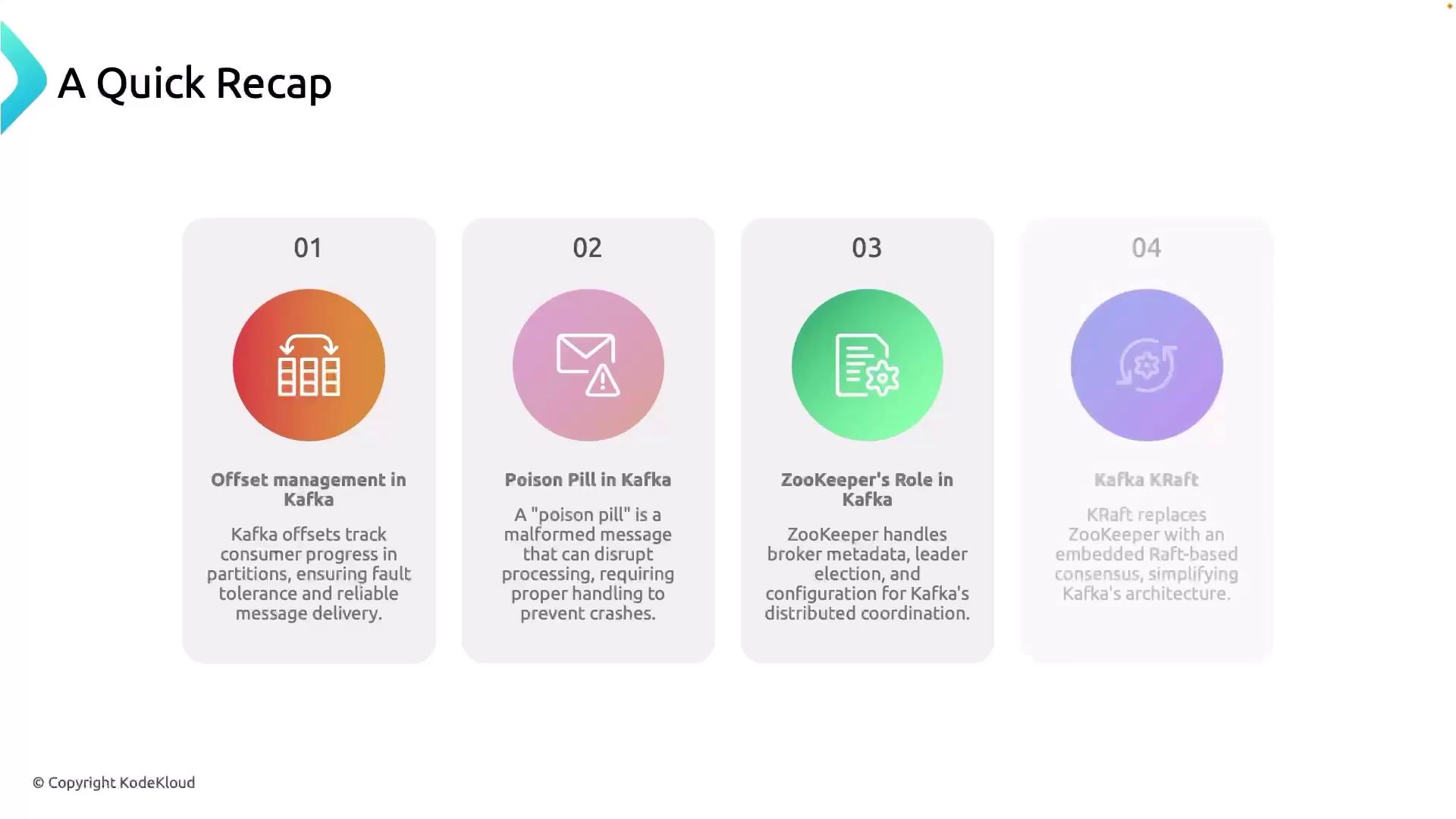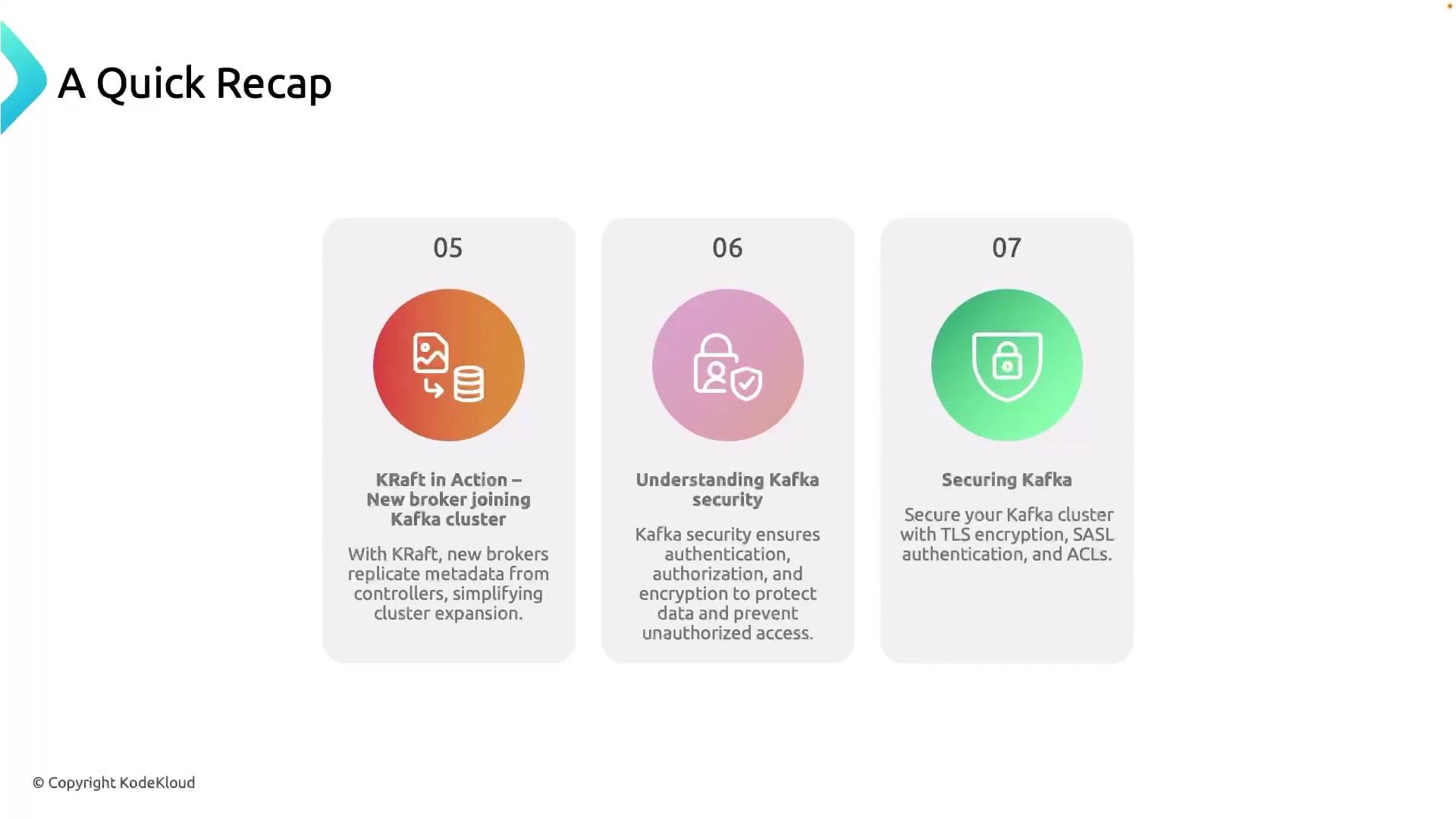Event Streaming with Kafka
Deep Dive into Kafka Beyond the Basics
Section Recap
In this lesson, we’ve revisited the core Kafka concepts you need for reliable, scalable event streaming.
Offset Management
Offsets record a consumer’s position within a topic partition. Kafka can:
- Auto-commit offsets at regular intervals
- Let you manually commit offsets for precise control
Proper offset handling ensures:
- Fault tolerance
- Seamless consumer restarts
- Exactly-once or at-least-once delivery semantics
Note
Consider manual commits when you need tight control over message acknowledgment and processing guarantees.
Poison Pill
A poison pill is a malformed or unexpected message that can crash your consumer and stall the pipeline. Best practices include:
- Catch exceptions around message deserialization or processing
- Log the offending payload for analysis
- Route bad records to a dead letter queue (DLQ)
- Resume the pipeline without interruption
Warning
Failing to handle poison pills can halt downstream systems and lead to data loss.
Legacy Coordination: ZooKeeper
ZooKeeper has historically managed:
- Cluster metadata
- Broker configurations
- Leader election
While mature and reliable, it introduces operational complexity and overhead.
Modern Coordination: KRaft (Kafka Raft)
KRaft is Kafka’s built-in consensus layer, replacing ZooKeeper by using the Raft protocol to handle:
- Metadata storage
- Controller duties
Benefits of KRaft:
- Simplified architecture
- Easier deployments in containers and Kubernetes
- Faster cluster scaling

Coordination Comparison
| Mechanism | Advantages | Drawbacks |
|---|---|---|
| ZooKeeper | Battle-tested, stable | Additional cluster to manage |
| KRaft | Native consensus, simpler deployments | Newer, evolving community |
KRaft in Action
With KRaft:
- Brokers fetch metadata directly from the controller broker
- Eliminates ZooKeeper setup steps
- Speeds up cluster scaling
- Simplifies broker integration in dynamic environments (e.g., Kubernetes)
Security in Kafka
Kafka’s security stack includes:
| Feature | Mechanism | Benefit |
|---|---|---|
| Encryption | TLS | Protects data in transit |
| Authentication | SASL (PLAIN, SCRAM, etc.) | Verifies client identity |
| Authorization | ACLs | Granular access control for topics/users |
These controls are critical for enterprise deployments, ensuring that only authorized clients can produce or consume data.

We’ve now covered:
- Offset management strategies
- Handling poison-pill messages
- Cluster coordination with ZooKeeper vs. KRaft
- End-to-end security using TLS, SASL, and ACLs
That concludes this lesson. See you next time!
Links and References
- Apache Kafka Documentation
- ZooKeeper Official Site
- KIP-500: Kafka Raft-based Metadata Log
- Kafka Security
Watch Video
Watch video content